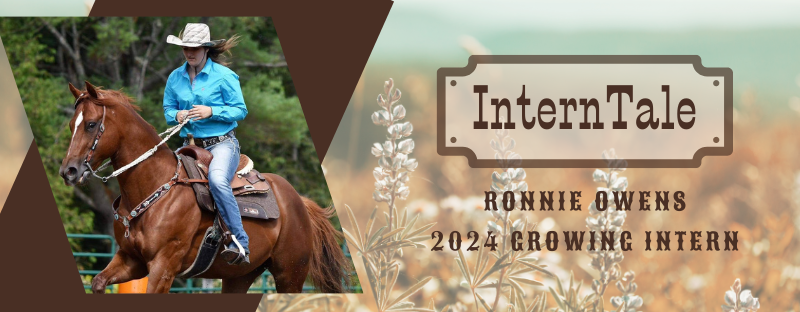Fencing and Doctoring Cattle
#bfrdpwy #aginternship #RightRisk
This week I focused on fence work on the mountain allotments. I went through pastures by foot and four-wheeler to repair fence and took out a line of fence to allow for a future wildlife friendly fence to be installed. My host runs his cattle on the Bighorn Mountains in different allotments during the year. This allows him to graze his cattle longer each year and is a major benefit for the mountain rangelands. Most of the fences on his allotments are wildlife friendly fencing which means he works with some wildlife agencies to put up fences that have specific height restrictions, must have smooth wire on the bottom strand and have reflective tape on the top wire. These restrictions are put forth to help deer, elk and pronghorn navigate through the fences easier and the reflective tape allows sage grouse to see the wire better.
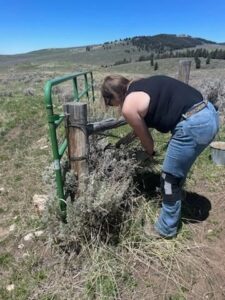
Grazing cattle on the Bighorns is a necessity for the rangelands located there. There isn’t enough wildlife to graze down the grasses enough to be sustainable, and if the grasses grow out of control, when they die it will choke out the new grass growth. This would make it easier for invasive species to grow there, especially the invasive species that can grow in not ideal environments such as cheatgrass and ventenata. The cattle are rotated to different pastures after being on one pasture for a certain amount of time to prevent overgrazing, which can also be very bad. My host aims for 35% utilization of his pastures on the mountain, which the Forest Service also monitors.

I also learned the importance of treating cattle for infections or ailments. I assisted with giving antibiotics to two heifers who were not feeling their best. They showed me how to give them pills orally and an injection of antibiotics abdominally. They informed me that giving injections abdominally will prevent the cow from having a swelling reaction to the injection. The cow’s body can absorb the medicine without giving the muscle any irritation, which could cause more issues.

From my prior knowledge of how the Forest Service works and after learning how involved they and other agencies are on the grazing processes, I would like to know why. I understand preserving the mountain ranges and making sure there is enough resources for everyone involved, but I feel as though the ranchers should get more leeway. The ranchers must follow strict utilization rules and regulations, or they will get fined. I feel as though the ranchers who are responsible for their allotments should be able to use and monitor them for what they have found works best for them. For example, if a rancher is monitoring his allotments and has been abiding by all rules for many years, he or she should be able to care for the allotment as they see fit.
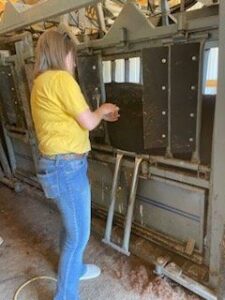
I came about this thought when my host was showing me sections of fence to fix. There were some places with thick, heavy cover of sage brush while other areas were more even between sage brush and grasses. The issue with thick sage brush cover is, they do not allow enough area for grasses and forbs to grow around them. They provide too much shade and therefore the grasses and forbs cannot grow. Obviously, this is a major issue for wildlife and the livestock that will be grazing there. My host had wanted to spray the thick areas of sage brush or even suggested doing a prescribed burn to lessen the impact the brush has on the grasses, however for years now the Forest Service has denied it for their own reasons. My host has a record of improving rangelands and has restored many of the pastures he uses for his cattle, with this knowledge, I question why the Forest Service wouldn’t let him manage the allotments to improve them for years to come.
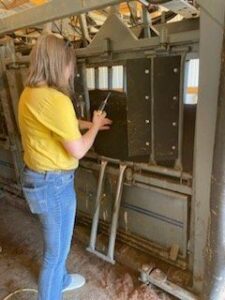
With the knowledge I have learned this week, I plan to do more research on the regulations of grazing on the Bighorn Mountains and other ranges. I would like to know if each mountain range is managed differently and what this looks like across the state. I am excited to start moving cows to the mountain allotments and getting to help build wildlife friendly fence in the future. I also look forward to learning more about doctoring cattle and how important it is to do research on what is being given and where it is given as this can cause deadly affects if not done properly.
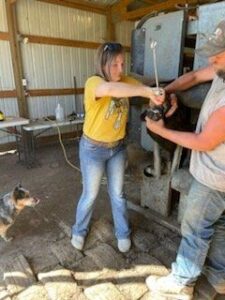
Submitted by: Ronnie Owens
Edits by: GrowinG Internship Team

